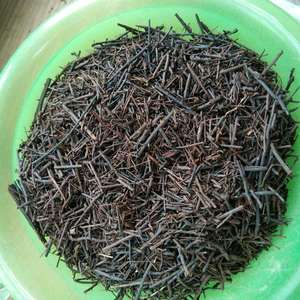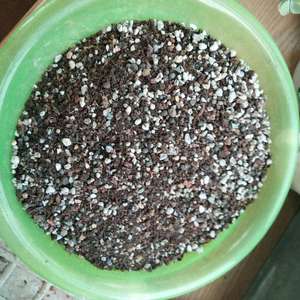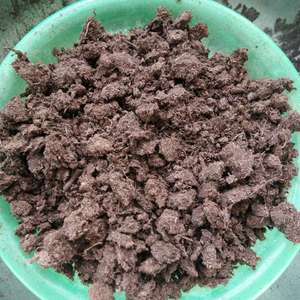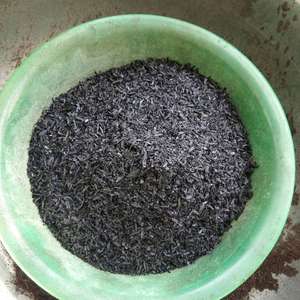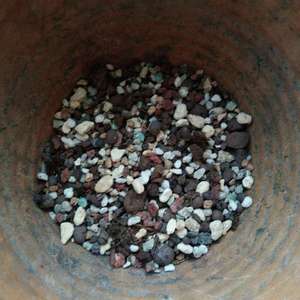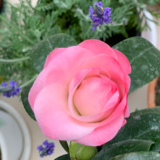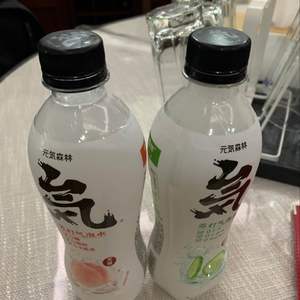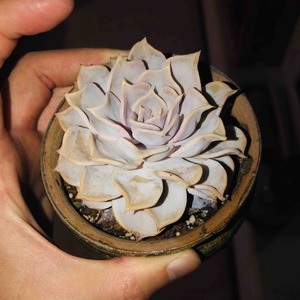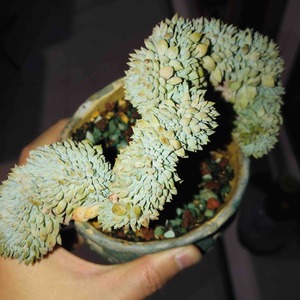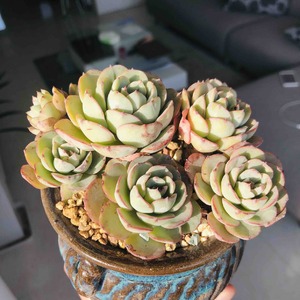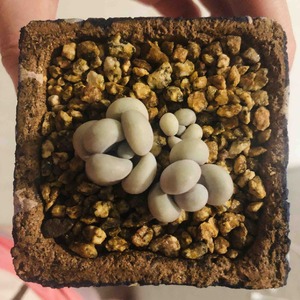成长记
kk_gg1208
2020年08月02日
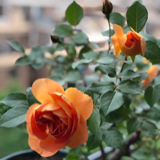
5月底新进的种球,开了两个花剑,第一个开完一个月后才开始出第二个花剑,图一是第一花剑的花,颜色亮丽,图二是第二个花剑的花,颜色柔和淡雅,都爱。




0
0
文章
ritau
2020年06月29日

The pomegranate (Punica granatum) is a fruit-bearing deciduous shrub in the family Lythraceae, subfamily Punicoideae, that grows between 5 and 10 m (16 and 33 ft) tall.
The pomegranate originated in the region extending from Iran to northern India, and has been cultivated since ancient times throughout the Mediterranean region. It was introduced into Spanish America in the late 16th century and into California by Spanish settlers in 1769.
The fruit is typically in season in the Northern Hemisphere from September to February, and in the Southern Hemisphere from March to May. As intact sarcotestas or juice, pomegranates are used in baking, cooking, juice blends, meal garnishes, smoothies, and alcoholic beverages, such as cocktails and wine.
Today, it is widely cultivated throughout the Middle East and Caucasus region, north and tropical Africa, the Indian subcontinent, Central Asia, the drier parts of southeast Asia, and parts of the Mediterranean Basin. It is also cultivated in parts of Arizona and the San Joaquin Valley in California. In the 20th and 21st centuries, it has become more common in the shops and markets of Europe and the Western Hemisphere.
The name pomegranate derives from medieval Latin pōmum "apple" and grānātum "seeded". Possibly stemming from the old French word for the fruit, pomme-grenade, the pomegranate was known in early English as "apple of Grenada"—a term which today survives only in heraldic blazons. This is a folk etymology, confusing the Latin granatus with the name of the Spanish city of Granada, which derives from Arabic.
Garnet derives from Old French grenat by metathesis, from Medieval Latin granatum as used in a different meaning "of a dark red color". This derivation may have originated from pomum granatum, describing the color of pomegranate pulp, or from granum, referring to "red dye, cochineal".
The French term for pomegranate, grenade, has given its name to the military grenade.

*Nutrition
A 100 g (3.5 oz) serving of pomegranate sarcotesta provides 12% of the Daily Value (DV) for vitamin C, 16% DV for vitamin K and 10% DV for folate (table).
Pomegranate seeds are a rich source of dietary fiber (20% DV) which is entirely contained in the edible seeds. People who choose to discard the seeds forfeit nutritional benefits conveyed by the seed fiber and micronutrients.
*Symbolism
-Ancient Egypt
Ancient Egyptians regarded the pomegranate as a symbol of prosperity and ambition. It was referred to by the Semitic names of jnhm or nhm.According to the Ebers Papyrus, one of the oldest medical writings from around 1500 BC, Egyptians used the pomegranate for treatment of tapeworm and other infections.
-Ancient and Modern Greece
The Greeks were familiar with the fruit far before it was introduced to Rome via Carthage, and it figures in multiple myths and artworks. In Ancient Greek mythology, the pomegranate was known as the "fruit of the dead", and believed to have sprung from the blood of Adonis.
The myth of Persephone, the goddess of the underworld, prominently features her consumption of pomegranate seeds, requiring her to spend a certain number of months in the underworld every year. The number of seeds and therefore months varies. During the months, while Persephone sits on the throne of the underworld beside her husband Hades, her mother Demeter mourned and no longer gave fertility to the earth. This was an ancient Greek explanation for the seasons.
According to Carl A. P. Ruck and Danny Staples, the chambered pomegranate is also a surrogate for the poppy's narcotic capsule, with its comparable shape and chambered interior. On a Mycenaean seal illustrated in Joseph Campbell's Occidental Mythology (1964), figure 19, the seated Goddess of the double-headed axe (the labrys) offers three poppy pods in her right hand and supports her breast with her left. She embodies both aspects of the dual goddess, life-giving and death-dealing at once.
The Titan Orion was represented as "marrying" Side, a name that in Boeotia means "pomegranate", thus consecrating the primal hunter to the Goddess.
In the 5th century BC, Polycleitus took ivory and gold to sculpt the seated Argive Hera in her temple. She held a scepter in one hand and offered a pomegranate, like a "royal orb", in the other. "About the pomegranate I must say nothing," whispered the traveller Pausanias in the 2nd century, "for its story is somewhat of a holy mystery."The pomegranate has a calyx shaped like a crown. In Jewish tradition, it has been seen as the original "design" for the proper crown.
A pomegranate is displayed on coins from Side. The ancient Greek city of Side was in Pamphylia, a former region on the southern Mediterranean coast of Asia Minor (modern-day Antalya province, Turkey).

Within the Heraion at the mouth of the Sele, near Paestum, Magna Graecia, is a chapel devoted to the Madonna del Granato, "Our Lady of the Pomegranate", "who by virtue of her epithet and the attribute of a pomegranate must be the Christian successor of the ancient Greek goddess Hera", observes the excavator of the Heraion of Samos, Helmut Kyrieleis.
In modern times, the pomegranate still holds strong symbolic meanings for the Greeks. When one buys a new home, it is conventional for a house guest to bring as a first gift a pomegranate, which is placed under/near the ikonostasi (home altar) of the house, as a symbol of abundance, fertility, and good luck. When Greeks commemorate their dead, they make kollyva as offerings, which consist of boiled wheat, mixed with sugar and decorated with pomegranate. Pomegranate decorations for the home are very common in Greece and sold in most home goods stores.
-China
The pomegranate is regarded as a symbol of fertility in China.
Introduced to China during the Han Dynasty (206 BC–220 AD), the pomegranate (Chinese: 石榴; pinyin: shíliu) in olden times was considered an emblem of fertility and numerous progeny. This symbolism is a pun on the Chinese character 子 (zǐ) which, as well as meaning seed, also means "offspring" thus a fruit containing so many seeds is a sign of fecundity. Pictures of the ripe fruit with the seeds bursting forth were often hung in homes to bestow fertility and bless the dwelling with numerous offspring, an important facet of traditional Chinese culture.
-In European Christian motifs
Detail from Madonna of the Pomegranate by Sandro Botticelli, c. 1487 (Uffizi Gallery, Florence)
In the earliest incontrovertible appearance of Christ in a mosaic, a 4th-century floor mosaic from Hinton St Mary, Dorset, now in the British Museum, the bust of Christ and the chi rho are flanked by pomegranates. Pomegranates continue to be a motif often found in Christian religious decoration. They are often woven into the fabric of vestments and liturgical hangings or wrought in metalwork. Pomegranates figure in many religious paintings by the likes of Sandro Botticelli and Leonardo da Vinci, often in the hands of the Virgin Mary or the infant Jesus. The fruit, broken or bursting open, is a symbol of the fullness of Jesus' suffering and resurrection.
In the Eastern Orthodox Church, pomegranate seeds may be used in kolyva, a dish prepared for memorial services, as a symbol of the sweetness of the heavenly kingdom.
The pomegranate originated in the region extending from Iran to northern India, and has been cultivated since ancient times throughout the Mediterranean region. It was introduced into Spanish America in the late 16th century and into California by Spanish settlers in 1769.
The fruit is typically in season in the Northern Hemisphere from September to February, and in the Southern Hemisphere from March to May. As intact sarcotestas or juice, pomegranates are used in baking, cooking, juice blends, meal garnishes, smoothies, and alcoholic beverages, such as cocktails and wine.
Today, it is widely cultivated throughout the Middle East and Caucasus region, north and tropical Africa, the Indian subcontinent, Central Asia, the drier parts of southeast Asia, and parts of the Mediterranean Basin. It is also cultivated in parts of Arizona and the San Joaquin Valley in California. In the 20th and 21st centuries, it has become more common in the shops and markets of Europe and the Western Hemisphere.
The name pomegranate derives from medieval Latin pōmum "apple" and grānātum "seeded". Possibly stemming from the old French word for the fruit, pomme-grenade, the pomegranate was known in early English as "apple of Grenada"—a term which today survives only in heraldic blazons. This is a folk etymology, confusing the Latin granatus with the name of the Spanish city of Granada, which derives from Arabic.
Garnet derives from Old French grenat by metathesis, from Medieval Latin granatum as used in a different meaning "of a dark red color". This derivation may have originated from pomum granatum, describing the color of pomegranate pulp, or from granum, referring to "red dye, cochineal".
The French term for pomegranate, grenade, has given its name to the military grenade.

*Nutrition
A 100 g (3.5 oz) serving of pomegranate sarcotesta provides 12% of the Daily Value (DV) for vitamin C, 16% DV for vitamin K and 10% DV for folate (table).
Pomegranate seeds are a rich source of dietary fiber (20% DV) which is entirely contained in the edible seeds. People who choose to discard the seeds forfeit nutritional benefits conveyed by the seed fiber and micronutrients.
*Symbolism
-Ancient Egypt
Ancient Egyptians regarded the pomegranate as a symbol of prosperity and ambition. It was referred to by the Semitic names of jnhm or nhm.According to the Ebers Papyrus, one of the oldest medical writings from around 1500 BC, Egyptians used the pomegranate for treatment of tapeworm and other infections.
-Ancient and Modern Greece
The Greeks were familiar with the fruit far before it was introduced to Rome via Carthage, and it figures in multiple myths and artworks. In Ancient Greek mythology, the pomegranate was known as the "fruit of the dead", and believed to have sprung from the blood of Adonis.
The myth of Persephone, the goddess of the underworld, prominently features her consumption of pomegranate seeds, requiring her to spend a certain number of months in the underworld every year. The number of seeds and therefore months varies. During the months, while Persephone sits on the throne of the underworld beside her husband Hades, her mother Demeter mourned and no longer gave fertility to the earth. This was an ancient Greek explanation for the seasons.
According to Carl A. P. Ruck and Danny Staples, the chambered pomegranate is also a surrogate for the poppy's narcotic capsule, with its comparable shape and chambered interior. On a Mycenaean seal illustrated in Joseph Campbell's Occidental Mythology (1964), figure 19, the seated Goddess of the double-headed axe (the labrys) offers three poppy pods in her right hand and supports her breast with her left. She embodies both aspects of the dual goddess, life-giving and death-dealing at once.
The Titan Orion was represented as "marrying" Side, a name that in Boeotia means "pomegranate", thus consecrating the primal hunter to the Goddess.
In the 5th century BC, Polycleitus took ivory and gold to sculpt the seated Argive Hera in her temple. She held a scepter in one hand and offered a pomegranate, like a "royal orb", in the other. "About the pomegranate I must say nothing," whispered the traveller Pausanias in the 2nd century, "for its story is somewhat of a holy mystery."The pomegranate has a calyx shaped like a crown. In Jewish tradition, it has been seen as the original "design" for the proper crown.
A pomegranate is displayed on coins from Side. The ancient Greek city of Side was in Pamphylia, a former region on the southern Mediterranean coast of Asia Minor (modern-day Antalya province, Turkey).

Within the Heraion at the mouth of the Sele, near Paestum, Magna Graecia, is a chapel devoted to the Madonna del Granato, "Our Lady of the Pomegranate", "who by virtue of her epithet and the attribute of a pomegranate must be the Christian successor of the ancient Greek goddess Hera", observes the excavator of the Heraion of Samos, Helmut Kyrieleis.
In modern times, the pomegranate still holds strong symbolic meanings for the Greeks. When one buys a new home, it is conventional for a house guest to bring as a first gift a pomegranate, which is placed under/near the ikonostasi (home altar) of the house, as a symbol of abundance, fertility, and good luck. When Greeks commemorate their dead, they make kollyva as offerings, which consist of boiled wheat, mixed with sugar and decorated with pomegranate. Pomegranate decorations for the home are very common in Greece and sold in most home goods stores.
-China
The pomegranate is regarded as a symbol of fertility in China.
Introduced to China during the Han Dynasty (206 BC–220 AD), the pomegranate (Chinese: 石榴; pinyin: shíliu) in olden times was considered an emblem of fertility and numerous progeny. This symbolism is a pun on the Chinese character 子 (zǐ) which, as well as meaning seed, also means "offspring" thus a fruit containing so many seeds is a sign of fecundity. Pictures of the ripe fruit with the seeds bursting forth were often hung in homes to bestow fertility and bless the dwelling with numerous offspring, an important facet of traditional Chinese culture.
-In European Christian motifs
Detail from Madonna of the Pomegranate by Sandro Botticelli, c. 1487 (Uffizi Gallery, Florence)
In the earliest incontrovertible appearance of Christ in a mosaic, a 4th-century floor mosaic from Hinton St Mary, Dorset, now in the British Museum, the bust of Christ and the chi rho are flanked by pomegranates. Pomegranates continue to be a motif often found in Christian religious decoration. They are often woven into the fabric of vestments and liturgical hangings or wrought in metalwork. Pomegranates figure in many religious paintings by the likes of Sandro Botticelli and Leonardo da Vinci, often in the hands of the Virgin Mary or the infant Jesus. The fruit, broken or bursting open, is a symbol of the fullness of Jesus' suffering and resurrection.
In the Eastern Orthodox Church, pomegranate seeds may be used in kolyva, a dish prepared for memorial services, as a symbol of the sweetness of the heavenly kingdom.
0
0
Drift🍭🌈
2020年06月05日

来家里的第二天它们的样纸,卖家说水培的这两个头几天3天一换水,7天之后可以改为5天一换水,期间如果看到水量少了,可以适当补充,植物土培的柠檬薄荷,基本是简单表面干了就可以浇水,前20天放在散光通风处,之后再晒太阳,水培的是一直都不要晒太阳的,放在散光处就好
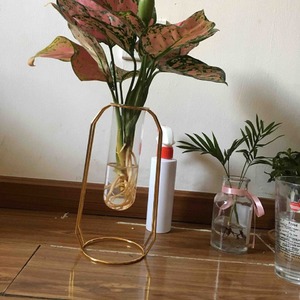

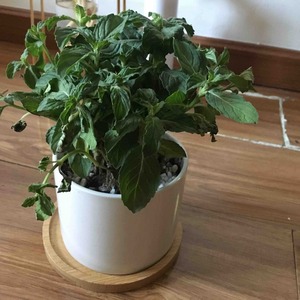



0
0
成长记
小妺
2020年05月31日

5月31日,阴。今天一早拍了花花,花花己经没有刚刚开的艳丽,从买回家的花蕾到爆盆,差不多经历了1个月的时间,虽然花花开始慢慢的萎了,不过在我的眼中还是满漂亮的。


0
0
文章
Miss Chen
2020年05月28日

桃蛋刚刚移栽到新的花盆中时,不要浇水,等到5-6天后,再为它进行浇水。具体内容如下:

桃蛋服盆期怎么浇水
如果养护的是桃蛋小苗,在为它进行换盆的时候,将桃蛋小苗从原来的花盆中脱盆拿出来,不用进行根系修剪,直接带土移栽到新的花盆中就可以了。这种情况下,桃蛋会进入一个服盆期,不要立刻为它浇水,放在阴凉且通风较好的地方养护5-6天左右,再选择一个晴朗的天气为它进行浇水就可以了。
如果桃蛋在服盆阶段,叶片已经发蔫了,缺水较为厉害了,可以沿盆少量浇一点点水,这样可以让土壤保持潮气。

如果是成株桃蛋进行服盆,在上盆前需要进行修根处理,像是干枯的根、过长的根都应该修剪。然后将它们放在通风的地方晾晒后,等到它伤口微微干枯收敛后,再进行上盆栽种。
这种情况在栽种的时候,最好选择潮土上盆。服盆期间不用立刻浇水,等到一周之后,土壤干的差不多了再为它进行浇水,养护合理的话,半个月左右就会生根服盆了。希望以上内容可以帮到大家!

桃蛋服盆期怎么浇水
如果养护的是桃蛋小苗,在为它进行换盆的时候,将桃蛋小苗从原来的花盆中脱盆拿出来,不用进行根系修剪,直接带土移栽到新的花盆中就可以了。这种情况下,桃蛋会进入一个服盆期,不要立刻为它浇水,放在阴凉且通风较好的地方养护5-6天左右,再选择一个晴朗的天气为它进行浇水就可以了。
如果桃蛋在服盆阶段,叶片已经发蔫了,缺水较为厉害了,可以沿盆少量浇一点点水,这样可以让土壤保持潮气。

如果是成株桃蛋进行服盆,在上盆前需要进行修根处理,像是干枯的根、过长的根都应该修剪。然后将它们放在通风的地方晾晒后,等到它伤口微微干枯收敛后,再进行上盆栽种。
这种情况在栽种的时候,最好选择潮土上盆。服盆期间不用立刻浇水,等到一周之后,土壤干的差不多了再为它进行浇水,养护合理的话,半个月左右就会生根服盆了。希望以上内容可以帮到大家!
0
1


